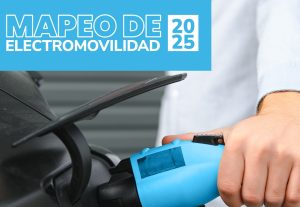With the aim of helping organizations prepare for the present and future of electromobility, which is currently going through a rather promising but uncertain future, MIRAIICO, a global consulting firm, was born in 2021.
The company’s name has Japanese origins. It comes from the word “Mirai”, which means “future”, and its slogan “We prepare companies for a global future” reinforces the purpose of a name that every day becomes a bigger space in the field of sustainable mobility.
Offering insight into its business management strategies and the current electromobility landscape in Latin America, MIRAIICO’s Cofounder and Chief Digital & Innovation Officer, Gabriel Madero, spoke with the Latam Mobility team.
During the interview, Madero also provided his perspective on what should be the way forward in the fleet management sector when making decisions about the purchase of combustion or electric vehicles.

Main Differential
For Gabriel Madero, the main differential aspect of MIRAIICO is undoubtedly the consulting in mobility services due to all the areas that can be covered.
“We help different organizations to design new experiences and solutions for urban mobility, with innovation, technology and evaluating trends, considering success stories from other countries and companies. Our previous experiences mean that we know the business, its challenges and opportunities very well.”
Weaknesses and Opportunities in Electromobility Landscape
Electromobility has different degrees of progress depending on the segment. We see that the micro-mobility and bus markets are much more advanced than passenger vehicles or even the commercial vehicle segment such as vans and trucks, always speaking in terms of the percentage of electric vehicle sales with respect to the total market. Therefore, there is still a lot of margin and growth opportunities in the last two segments.
At the same time, we see that electric vehicles are taking control of the market over hybrids and plug-in hybrids; we still cannot determine what will happen with fuel cell (hydrogen) vehicles, which are still under development and with great growth opportunities, especially in buses and commercial vehicles.
And in reference to battery technologies, there is still a long way to go in terms of charging speed and autonomy, which in turn represents a great challenge for the industry.
Continuing with the main challenges, both the generation of a much larger charging network and an adequate support infrastructure will be necessary to consolidate the expansion of vehicle electrification. This will of course represent new challenges and transformations for manufacturers and distributors, since they will have to train personnel and reconvert their premises into mobility centers.
Finally, new policies and regulations will be necessary to encourage the use of this type of vehicles, subsidies/incentives for factories and autoparts, as well as for consumers in the purchase of EVs, will accelerate the electrification adoption curve.
Challenges for EV adoption in LATAM
Although in the midst of the transition there are many challenges facing LATAM to achieve the correct adoption of electromobility, Madero mentioned five of the main challenges facing the sector.
- Models Availability Could Limit Supply
- Dependence on imports for either vehicles or spare parts could imply high revenue costs that not everyone would be able to access.
- Additionally, in some countries of the region, the lack of financing or incentives would further limit access to this type of vehicles.
- It should be kept in mind that as the EV fleet grows and charging stations increase, this will demand a greater amount of energy, which could generate instability in the charging network, and this would end up discouraging the use of EVs.
- The shortage of important components for batteries, such as lithium, nickel or cobalt, could generate an increase in their prices, and that is why it is necessary to start regulating their consumption and try new chemical mixtures.
Line to be Defined in Fleet Management: Electric or Combustion?
The evaluation must consider almost all the factors we have mentioned, in addition to other characteristics that I will detail below: availability of models based on the use of the fleet, distances to be covered by those who use them, the maturity of the charging infrastructure in the area where these types of vehicles will be used and the incentives that the organization may have for the replacement of the fleet.
Of course, the commitment of the organization to sustainability will also have a bearing on the speed with which the transition to electric vehicles is made. The important thing is to begin to evaluate this alternative, which will undoubtedly continue to grow in the coming years in the region, in some countries much more than in others, but it is definitely a transition that has already begun.




